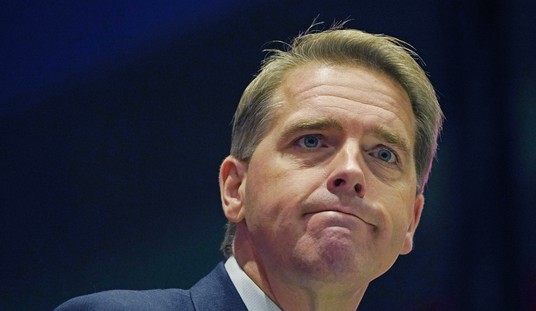In the old days (i.e., last month), a photo editing program such as Photoshop was needed for journalists to dabble in fauxtography. But nowadays, all it takes is a simple word processing program, and you’re good to go!
For those who tuned in late, Mr. Hoepker’s photograph depicts five young white New Yorkers on the Brooklyn waterfront engaged in conversation while smoke from the World Trade Towers billows above and behind them. The scene includes a park bench and a bicycle, blue sky and water. The quintet seem to be concentrating on each other on a gorgeous day with the disaster purely as background.
As reported by David Friend in his new book “Watching the World Change: The Stories Behind the Images of 9/11,” Mr. Hoepker saw the people in his photograph as “totally relaxed like any normal afternoon. They were just chatting away. It’s possible they lost people and cared, but they were not stirred by it. . . .I can only speculate [but they] didn’t seem to care.”
That was enough for Mr. Rich to declare in his column this Sept. 10 that “from the perspective of 9/11’s fifth anniversary, Mr. Hoepker’s photo is prescient as well as important–a snapshot of history soon to come. What he caught was this: Traumatic as the attack on America was, 9/11 would recede quickly for many. This is a country that likes to move on, and fast. The young people in Mr. Hoepker’s photo aren’t necessarily callous. They’re just American.”
The next day the journalist David Plotz wrote a piece on Slate that disputed Mr. Rich, calling his reading of the image a “cheap shot.” In Mr. Plotz’s view the five have not ignored or moved beyond 9/11 but have “turned toward each other for solace and for debate.” He asked any of the people in the photograph to contact Slate and describe the event from their side of the lens.
First to respond was Walter Sipser, a Brooklyn artist. “A snapshot can make mourners attending a funeral look like they’re having a party,” he wrote. “Had Hoepker walked fifty feet over to introduce himself he would have discovered a bunch of New Yorkers in the middle of an animated discussion about what had just happened.” Another figure in the picture who wrote in was Chris Schiavo, a professional photographer. She bitterly chastised both Mr. Rich and Mr. Hoepker for their “cynical expression of an assumed reality.” As a “third-generation native New Yorker, who knows and loves every square inch of this city,” whose “mother even worked for Minoru Yamasaki, the World Trade Center architect,” she stated that “it was genetically impossible for me to be unaffected by this event.”
It can’t be fun to have your public moment of emotional confusion hijacked by a Magnum photographer and turned into a national symbol of moral disgrace by a New York Times columnist.
Mr. Hoepker and Mr. Rich interpreted the picture for their own purposes, claiming to know from the relaxed gestures of the group and the context of the event what the five were talking about and thinking.
But their simplistic reading of the image, however mistaken in the view of those in it, is more na











Join the conversation as a VIP Member